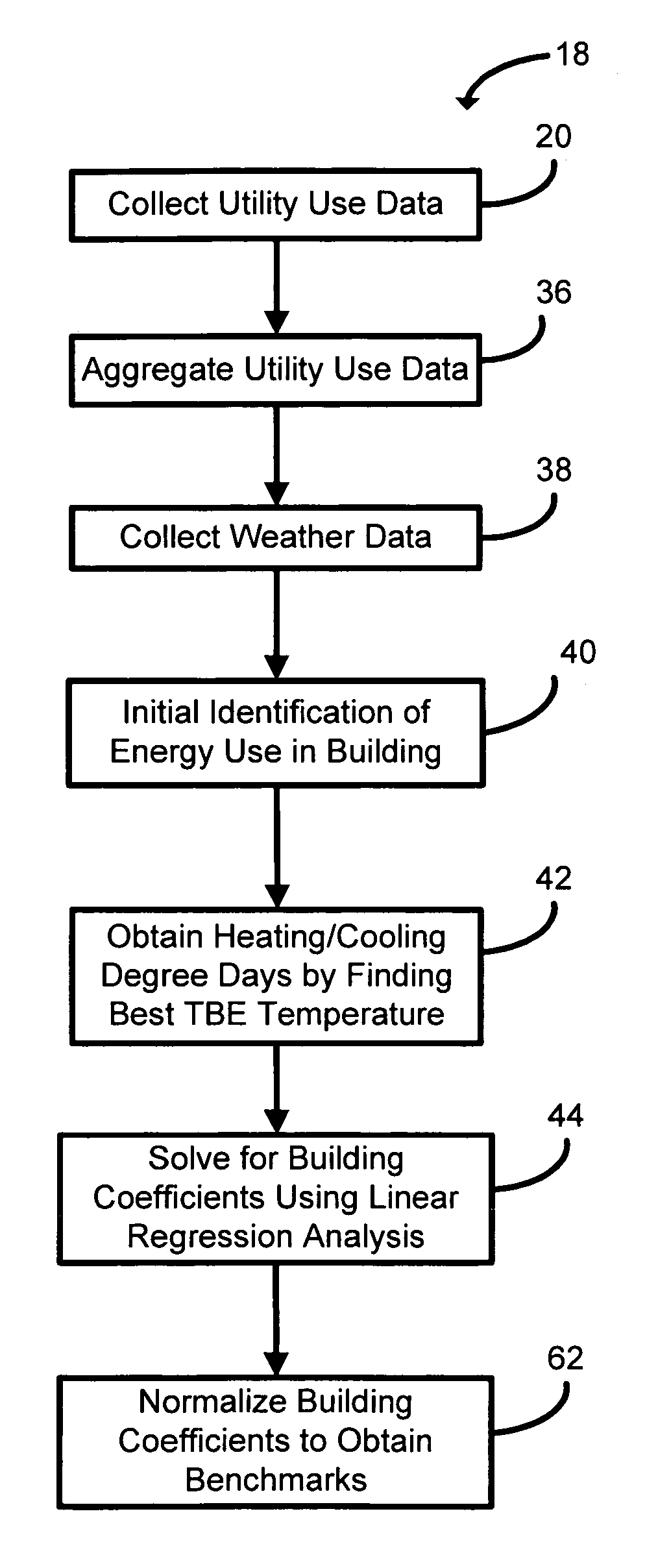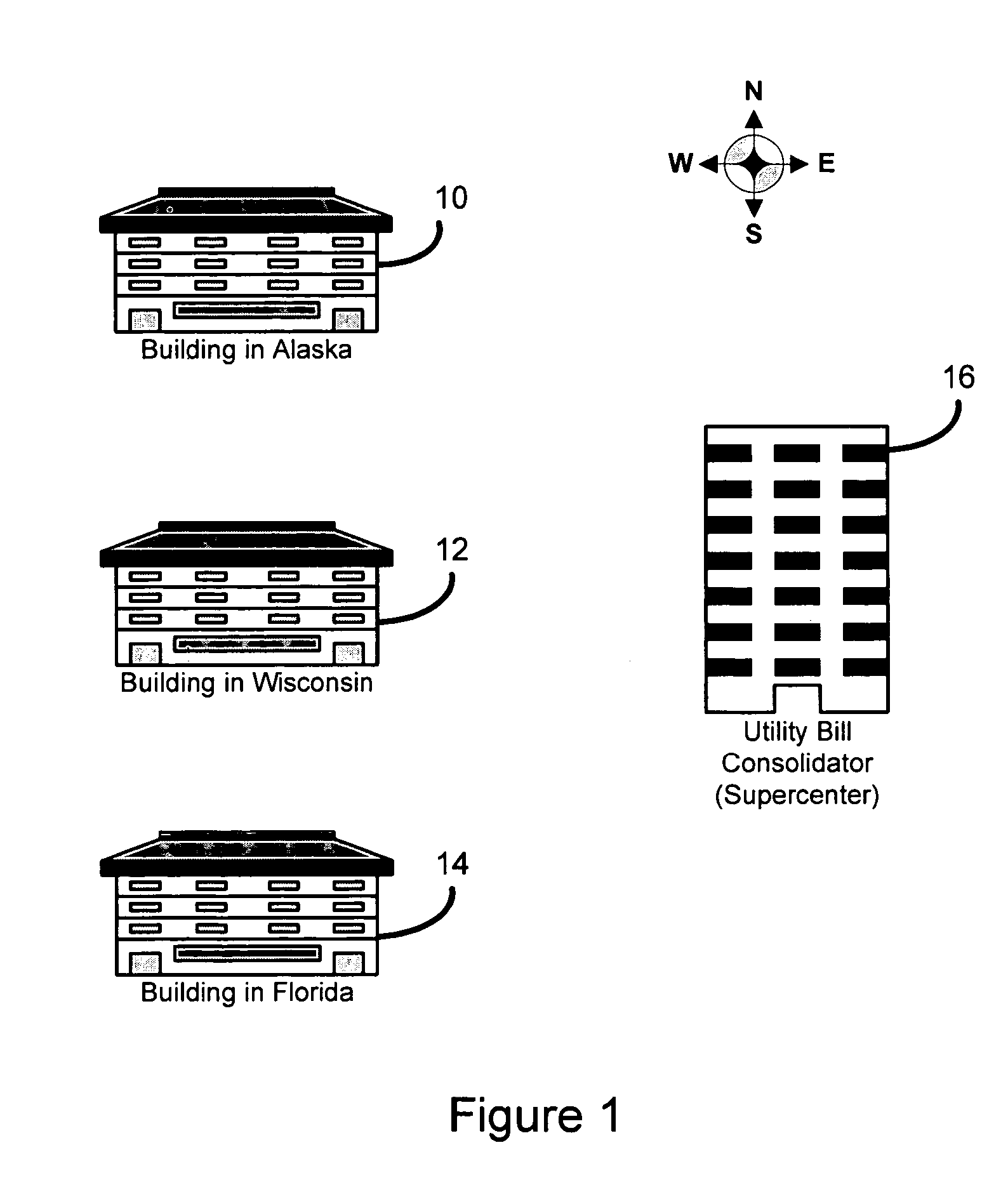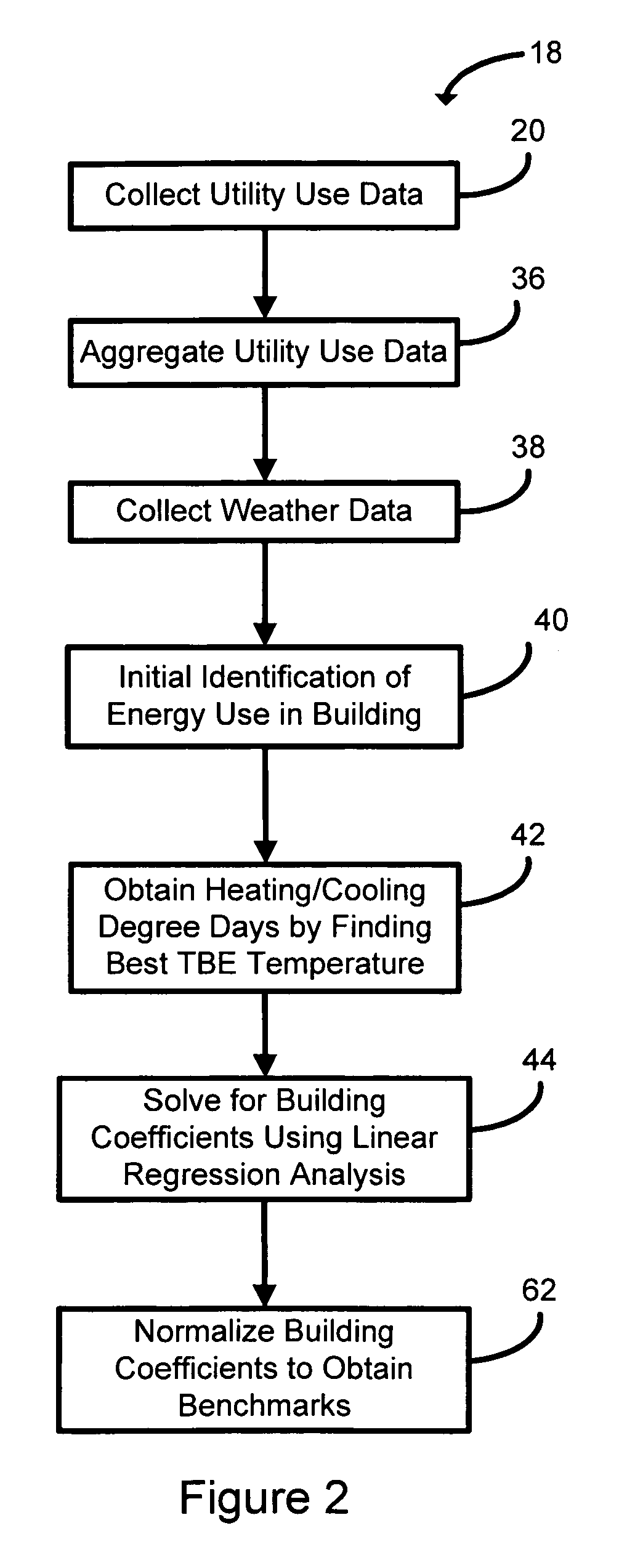Method and system for assessing energy performance
a technology of energy performance and system, applied in the direction of instruments, nuclear engineering, nuclear elements, etc., can solve the problems of a small amount of electricity automatically having some built-in error, the methodology for building energy use benchmarking is not without problems, and the energy use of natural gas or another fuel is typically not 100% efficien
- Summary
- Abstract
- Description
- Claims
- Application Information
AI Technical Summary
Benefits of technology
Problems solved by technology
Method used
Image
Examples
Embodiment Construction
[0026]Turning now to the drawings, FIG. 1 shows three buildings 10, 12 and 14 in differing climate geographies for which it is desired to measure their relative energy performance. For example, building 10 may be located in Alaska, building 12 may be located in Wisconsin, and building 14 may be located in Florida. Buildings 10, 12 and 14 may be owned and / or managed by the same entity or different entities.
[0027]In many cases, building 14 in Florida will have a different energy provider than building 12 in Wisconsin. In addition, building 14 in Florida may itself have more than one utility provider. For example, building 14 may have an electricity provider that is different from its fuel provider, and both of which are different from its natural gas provider. In an exemplary embodiment, all of the utility service providers send their utility bills directly to a super center 16 that consolidates the bills for its customers (e.g., buildings 10, 12 and 14). Each of the buildings 10, 12 ...
PUM
 Login to View More
Login to View More Abstract
Description
Claims
Application Information
 Login to View More
Login to View More - R&D
- Intellectual Property
- Life Sciences
- Materials
- Tech Scout
- Unparalleled Data Quality
- Higher Quality Content
- 60% Fewer Hallucinations
Browse by: Latest US Patents, China's latest patents, Technical Efficacy Thesaurus, Application Domain, Technology Topic, Popular Technical Reports.
© 2025 PatSnap. All rights reserved.Legal|Privacy policy|Modern Slavery Act Transparency Statement|Sitemap|About US| Contact US: help@patsnap.com



